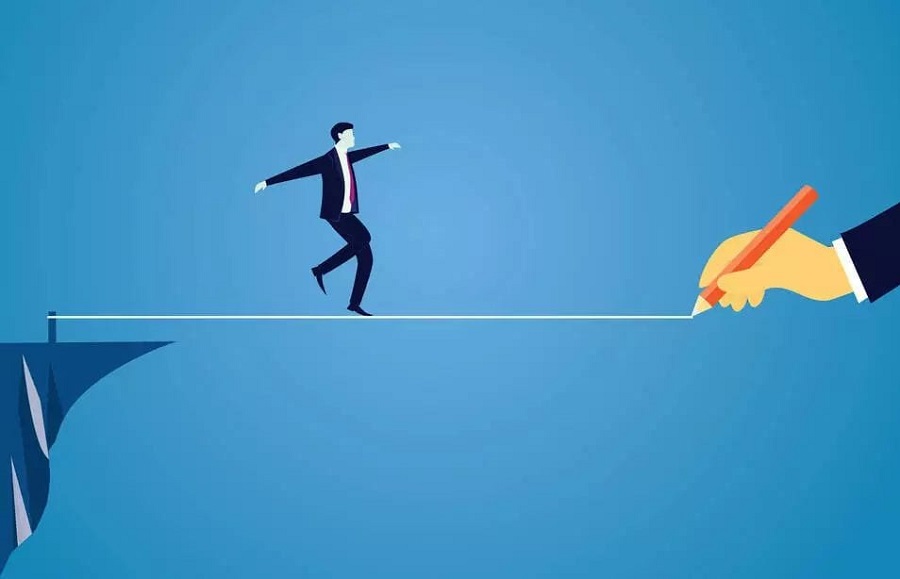RIO DE JANEIRO, BRAZIL – The unstable scenario has raised the perception of risk in the country. The CDS Brazil (Credit Default Swap), considering a 5-year term, increased from 150 points at the start of the year to around 200 points now – up 33%.
The indicator measures investors’ perception of the country. The higher the value of the index, the greater the perception that Brazil is not a safe country to invest in. “It’s insurance against default,” says Levante’s macroeconomic analyst Gabriel Floriano. He says that considering a 10-year term, the increase reached almost 35%.

Moreover, data from the Ibre-FGV (Brazilian Institute of Economics – Getulio Vargas Foundation) show a deterioration in the confidence of both entrepreneurs and consumers in the country’s economy.
ENTREPRENEURS AND CONSUMERS DISTRUST
According to the Ibre-FGV, the Business Confidence Index (ICE) dropped from 101.2 points in August to 99.3 points in September. The decline occurred in all monitored sectors: industry, commerce, services, and construction.
On the consumer side, confidence shrank by 11.5 points, a drop for the second consecutive month, to 74.6 points. If the September forecast is confirmed, it will be the lowest result since April this year, when the indicator stood at 72.5 points.
For Mauá Capital’s CEO and Central Bank’s ex-director of monetary policy Luiz Fernando Figueiredo, the distrust has its origin in the control of the health aspect during the pandemic.
“When looking at the economic aspect, one cannot say that the country handled the economy poorly. There was a large monetary expansion to keep activities afloat. However, the health aspect was disastrous, and this produced a very negative perception of how Brazil conducted the process,” Figueiredo says.
According to data from IBGE (Brazilian Institute of Geography and Statistics), in 2020, the first year of the pandemic, Brazil’s GDP fell 4.1% – the worst drop in 24 years. The average annual unemployment rate in the country was 13.5% last year, the highest ever recorded since the start of the historical series in 2012.
The most recent data show that GDP shrank by 0.1% in the second quarter of 2021, compared to the first quarter. In comparison with the second quarter last year, the period when the country was most affected by the first wave of Covid-19, the economy grew 12.4%.
According to investment analysis house OhmResearch’s CEO Roberto Attuch Jr, the high degree of uncertainty is related to the anticipation of the electoral debate. “The market is in this ‘loop’ about whether emergency aid will continue and around the approval of the Proposed Constitutional Amendment of Court-ordered Debt. This is because investors understand that the government’s main agenda is to buy popularity in order to be competitive in 2022,” Attuch Jr says.
WHERE TO INVEST GIVEN INCREASED RISK?
According to market analysts, investors should think about short, medium and long term goals. Being more rigorous when investing, especially when it comes to variable income, is also among the instructions. The time is for caution, albeit not panic, the experts emphasize.
“Investors must be more selective. With the problems, they naturally shorten the average term of these investments,” says Original Bank’s chief economist Marco Caruso.
FOCUS ON FIXED INCOME AND CAUTION ON THE STOCK MARKET
According to the Central Bank as disclosed in the last Focus Report, the SELIC, currently at 6.25% a year, is expected to close 2021 at 8.25%. For a quick comparison, the basic interest rate stood at 2% until March 2021.
With the change of scenario, Original reduced its recommendation for purchases in the stock market, and reinforced it in fixed income. In this case, Caruso warns that it is necessary to wait for the maturity date of bonds to secure returns in full.
For investors with a greater appetite for risk, the indication is for companies in the real economy, such as in the energy and banking sectors.
“I don’t think that the outlook for assets is very negative, because there’s already a lot of this perspective embedded in them. The Brazilian stock market is currently one of the worst in the world [it is cheap], and the risk premium [return prospect] is the size of an elephant,” says Mauá Capital’s Luiz Fernando Figueiredo.
The specialist sees real estate funds and assets with long-term interest, namely debentures and Treasury bonds, such as the IPCA Treasury (post-fixed, with half-yearly payments), as interesting options.
“A product that pays the inflation rate plus 5% a year is a lot. You don’t find this anywhere in the world,” Figueiredo says.
FOREIGN INVESTMENTS HELP PROTECT THE PORTFOLIO
XP Investimentos’ stock strategist Jennie Li argues that it is important for investors to diversify their portfolios, especially with international assets, such as those that make up the S&P 500 index of the New York Stock Exchange. “They [international assets] fluctuate for other reasons, but they are more protected from domestic uncertainty,” she says.
On the Exchange, Li believes that commodity and export companies, which are more exposed to the global growth scenario, can be a good deal.
To protect themselves from internal volatility, Attuch Jr indicates the purchase of BDRs (Brazilian drawing rights), certificates that represent shares of companies open in foreign stock exchanges. “Brazil’s scenario is extremely uncertain for the next 12 months,” he says.

